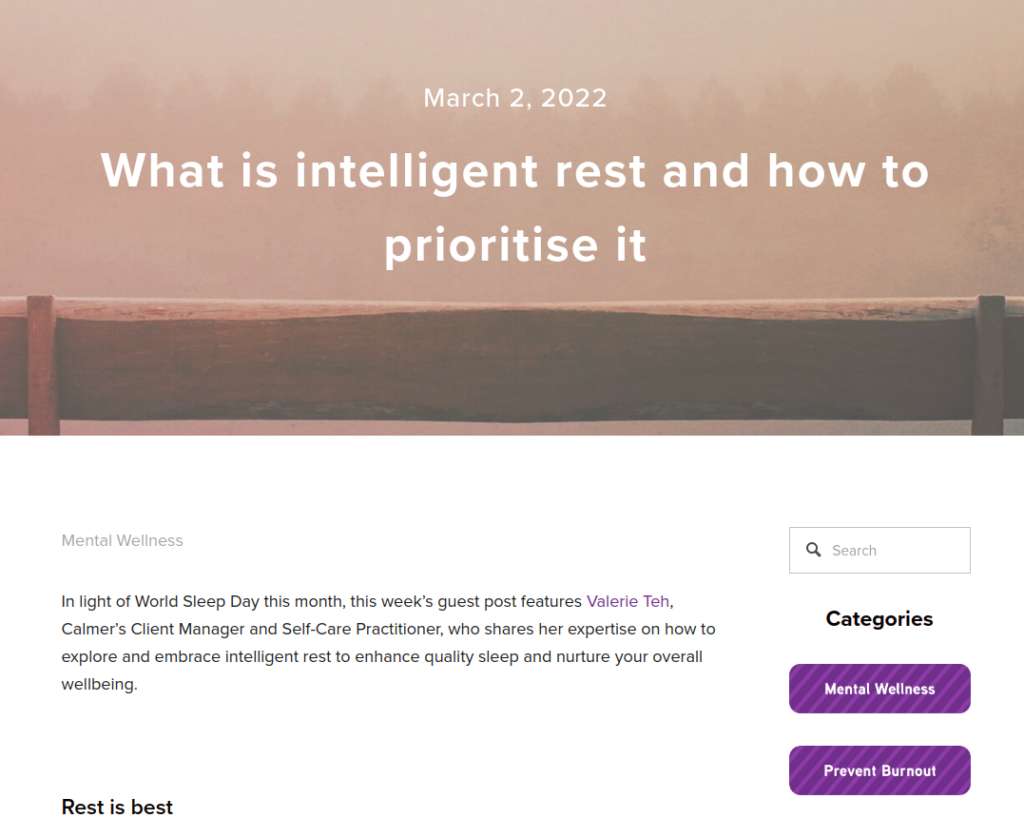Publication
Calmer
Abstract
In light of World Sleep Day this month, this week’s guest post features Valerie Teh, Calmer’s Client Manager and Self-Care Practitioner, who shares her expertise on how to explore and embrace intelligent rest to enhance quality sleep and nurture your overall wellbeing.
Web and Email Links
Related Listings
Journal
Behavioral Medicine
To clarify the mechanisms of gender-related mind/body relationships, the authors analyzed the characteristics of 1,132 outpatients (848 women and 284 men) attending a mind/body medicine clinic. At entry in the program, the patients completed the Medical Symptom Checklist, Symptom Checklist-90 revised (SCL-90R), and Stress Perception Scale. Women reported 9 out of 12 symptoms (fatigue, insomnia, headache, back pain, joint or limb pain, palpitations, constipation, nausea, and dizziness) […]
Journal
Behavioral Medicine
This randomized, prospective study investigated the effectiveness of two group behavioral medicine interventions for primary care patients experiencing physical symptoms with a psychosocial component (eg, palpitations, gastrointestinal disturbances, headaches, malaise, sleep disorders). The subjects were 80 volunteers at a health maintenance organization (HMO) in the greater Boston area. Both interventions focused on the mind/body relationship and used didactic material, relaxation-re […]
Journal
Journal of Human Stress
The efficacy of the regular elicitation of the relaxation response in reducing surgical anxiety and pain in an ambulatory surgery setting was studied in a population of patients scheduled for the surgical removal of a skin cancer. Forty-nine patients with skin cancer were enrolled in the study immediately after being informed of the ned for surgery; 21 of these patients elicited the relaxation response 20 minutes per day until the day of surgery, 21 read for 20 minutes per day, and 7 […]

